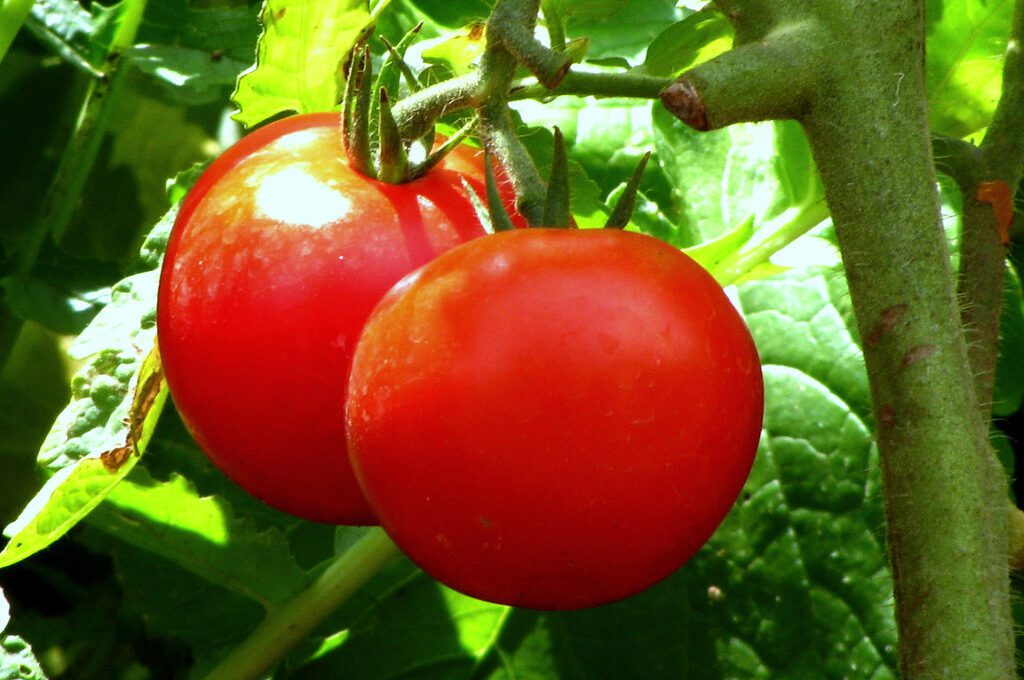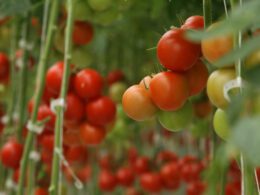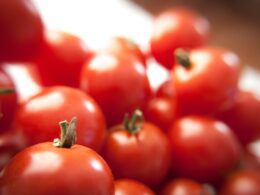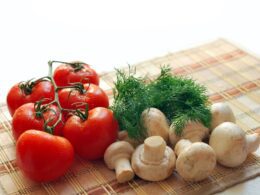You’re eager to grow the juiciest, most delectable tomatoes in your garden, and you know that proper pruning is key to achieving this goal. But how do you trim your tomato plants effectively to produce more fruit? Fear not, dear gardener! This article will guide you through the process of understanding different types of tomato plants, mastering trimming techniques, and maintaining plant health to ensure a bountiful harvest.
By learning these essential skills, you’ll be able to protect your tomato plants from diseases and pests while also maximizing their fruit production. So sit back, relax, and let’s dive into the world of tomato pruning together.
In no time at all, you’ll be enjoying the fruits of your labor – quite literally – as your garden flourishes with an abundance of mouth-watering tomatoes.
Understand the Different Types of Tomato Plants
First off, let’s get familiar with the various types of tomato plants out there! There are two main categories: determinate and indeterminate.
Determinate tomato plants are more compact and bush-like. They grow to a certain size, produce all their fruit at once, and then stop growing. These are great for small gardens or container gardening since they don’t take up too much space.
On the other hand, indeterminate tomato plants continue to grow and produce fruit throughout the entire season until frost kills them. They can become quite large, so they’ll need plenty of room to spread out.
Now that you know the difference between these two types of tomatoes, it’s important to choose wisely based on your garden space and desired harvest time. If you’re looking for a quick harvest in a small area, go for determinate varieties like Roma or Celebrity tomatoes. But if you have more room and want a continuous supply of fresh tomatoes throughout the season, opt for indeterminate varieties such as Cherry or Beefsteak tomatoes.
By understanding which type of tomato plant best suits your needs and available space, you’ll be better equipped to successfully grow an abundant crop this season. Plus, knowing what kind of plant you’re working with will help when it comes time to trim them properly for increased fruit production – but we’ll get into that later on!
So take some time now to research different tomato varieties before heading to your local nursery or ordering seeds online – your future self (and taste buds) will thank you!
The Importance of Pruning
You might be wondering why pruning your tomato plants is essential. Well, trimming them has numerous benefits. For instance, it increases fruit production and reduces the risk of diseases. It’s best to start pruning when the plant is about 12-18 inches tall. So, get ready to learn more about this beneficial practice!
Benefits of Trimming Tomato Plants
Imagine the satisfaction of a bountiful harvest, all thanks to the simple act of trimming those precious tomato plants! By carefully pruning your tomatoes, you’ll not only increase their fruit production but also improve their overall health.
Trimming helps to ensure proper air circulation and sunlight penetration, reducing the risk of diseases like blight or mildew. It also allows you to direct more energy into producing delicious fruits rather than excessive foliage.
Another benefit of trimming is that it can prevent overburdening the plant with too many fruits at once, which could lead to broken branches or fruit that doesn’t fully ripen. By selectively removing some shoots and flowers, you’re giving your tomato plant a better chance at producing larger and tastier fruits.
Plus, by regularly checking on your plants and trimming as needed, you’re keeping an eye on their well-being and ensuring a safe environment for them to thrive in. So go ahead – wield those pruning shears confidently and enjoy the rewards of a healthy and fruitful tomato harvest!
When to Start Pruning
It’s crucial to know when to start pruning, as proper timing can significantly impact the health and productivity of your tomato plants. Generally, you should begin pruning when your tomato plants are about 12-18 inches tall or have developed at least 2-3 main stems. At this stage, they’re strong enough to withstand the process, and it’ll help them grow even healthier and more robust.
Keep an eye on their growth and be prepared to take action once they reach the appropriate size.
When you see any signs of disease or pests on your plants, it’s essential to act quickly. Remove affected leaves and branches immediately to prevent the problem from spreading throughout your plant or garden.
Regularly inspecting your tomato plants will ensure that you catch these issues early on, providing a safer environment for both your tomatoes and other nearby plants. By being proactive in maintaining your garden, you’ll enjoy a bountiful harvest with less worry about potential threats affecting your crop’s quality or yield.
How to Trim Tomato Plants
Ready to boost your tomato harvest and enjoy a bountiful crop? Let’s dive into the art of trimming those plants! Trimming your tomato plants not only helps increase fruit production, but it also keeps them healthy by improving air circulation and reducing the risk of diseases. Plus, it’s an easy process that you can master with some practice, ensuring a safe and thriving garden for you and your family.
To effectively trim your tomato plants, follow these simple steps:
-
Identify the suckers: Suckers are small shoots growing in the crotch between the main stem and branches. They consume energy from the plant without producing much fruit.
-
Choose which suckers to remove: You’ll want to remove most suckers up to 12 inches from the ground as well as any growing on weaker branches. Leave a few on stronger branches for balanced growth.
-
Use clean, sharp pruning shears: This’ll help prevent damage to the plant and reduce the risk of spreading diseases.
-
Cut at an angle close to the stem: Make sure not to leave long stubs behind; this’ll result in cleaner cuts that heal faster.
As you continue caring for your tomato plants throughout their growth cycle, keep an eye out for yellowing leaves or signs of disease or pests. By maintaining healthy pruning habits, you’re providing a safe environment for both yourself and future generations of tomatoes. Remember that consistent care is key – happy trimming!
Can Overwatering Cause Tomato Plants to Produce Less Fruit?
Overwatered tomato plants can indeed result in reduced fruit production. Excessive watering can cause root rot, inhibiting nutrient uptake, and affecting the plant’s overall health. Additionally, overwatering can lead to the leaching of essential nutrients from the soil. It is crucial to strike a balance by ensuring proper drainage and providing the plants with the optimal amount of water to promote healthy growth and fruit production.
Maintaining Plant Health
Now that you’ve mastered trimming, let’s focus on keeping those tomato plants healthy and thriving throughout the season. A well-maintained plant will produce more fruit, so it’s important to give your tomatoes the attention they need.
Start by watering them consistently and deeply, as irregular or shallow watering can stress the plant and reduce fruit production. Tomato plants typically need about an inch of water per week; however, this might vary depending on your region’s climate.
Keep a close eye on your plants’ leaves for any signs of disease or pests. Yellowing leaves may indicate nutrient deficiencies or overwatering, while small holes in the foliage could mean insect damage. If you notice any issues, act quickly to address them – whether it’s adjusting your watering schedule, applying organic fertilizers for added nutrients or using natural pest control methods such as introducing beneficial insects like ladybugs into your garden.
As the season progresses and temperatures rise, make sure to provide adequate support for your growing tomato plants with cages or stakes. This not only helps keep the fruit off the ground but also encourages better air circulation around the plant which reduces humidity levels – a breeding ground for diseases like blight and mildew.
By taking these steps to maintain good plant health, you’ll be well on your way to harvesting a bountiful crop of delicious tomatoes!
Additional Tips for Maximizing Fruit Production
Ready to maximize your tomato plant’s fruit production? Let’s dive into some essential tips to help you achieve this goal.
Here are some techniques that will put you on the path to enjoying an abundant harvest:
-
Support your plants. Tomato plants can get quite heavy with fruit, so it’s important to provide them with proper support. Use stakes or cages to keep the plants upright and prevent them from toppling over.
-
Encourage fruit set. You can do this by gently shaking the plants, which helps distribute pollen and increases the chances of successful fertilization. You can also try using a fertilizer specifically designed to promote fruit development.
With these tips, you’ll be well on your way to maximizing your tomato plant’s fruit production. So get out there and start growing!
Supporting Your Tomato Plants
In this section, we’re focusing on how to properly support those juicy tomato plants for a bountiful harvest! Providing the right support not only promotes healthy growth but also helps protect your precious fruit from pests and diseases.
As your tomato plants grow taller, they can become top-heavy and may even topple over if not adequately supported. By giving them the necessary structure, you’ll ensure that they remain upright and their fruits are kept off the ground, safe from rot and critters.
Here are some popular methods of supporting your tomato plants:
-
Staking:
-
Drive a sturdy stake into the ground next to each plant.
-
Use soft ties or strips of fabric to gently secure the main stem to the stake as it grows.
-
Caging:
-
Place a wire cage around each plant while it’s still young.
-
Guide branches through openings in the cage as they grow.
-
Trellising:
-
Install a strong trellis system behind or alongside your row of tomato plants.
-
Tie vines to the trellis with twine or soft ties as they reach upward.
Choose whichever method works best for you and your garden setup – just remember that proper support is essential for keeping those tasty tomatoes safely off the ground and within easy reach when it’s time to pick them!
Encouraging Fruit Set
It’s crucial to encourage fruit set in order to maximize your tomato harvest, so let’s discuss some effective techniques for achieving this!
First and foremost, ensure that your plants are getting the right amount of sunlight. Tomatoes need a minimum of six hours of direct sunlight per day to produce healthy flowers and fruits. If your plants aren’t receiving enough light, consider relocating them or using reflective materials like aluminum foil to bounce more light onto their leaves.
Another essential factor in encouraging fruit set is proper pollination. While tomatoes can self-pollinate, they still benefit from being gently shaken or tapped every few days when flowers are open; this helps distribute pollen within the flower and increases the chances of successful pollination.
You can also attract helpful pollinators like bees by planting nectar-rich flowers nearby, which will not only support the ecosystem but also keep you safe by avoiding the use of harmful pesticides in your garden.
Conclusion
In conclusion, trimming your tomato plants plays a crucial role in producing more fruit. Remember to identify the type of plant you have and prune it accordingly to maintain its health throughout the growing season.
By following these guidelines and tips, you’ll be on your way to maximizing your tomato harvest.
Happy gardening!









